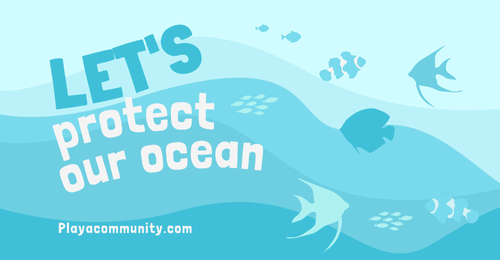September is Ocean Month in Panama!

September in Panama is dedicated to raising ocean awareness. Learn about events in Panama for ocean month, like beach cleanups and turtle conventions, aimed at protecting marine animals and ecosystems
Human activities have negatively affected the coastal areas’ environment and biodiversity (Cherif et al., 2020), which has impacted coastal tourism, the primary driver of the economy of coastal cities worldwide (Mejjad et al., 2022; Schaffer & Tham, 2019; Scherrer, 2020).
Sharing information on marine ecosystems builds an understanding of life cycles, habits, and how marine life is vital to the planet as a whole. By educating about human influences and reliance on these species, as well as changing environmental conditions, will can improve the health of the ecosystems and their marine inhabitants.
Ocean Month 2024 in Panama
This year Panama celebrates ocean month with several events throughout the country. The month kicked off in Panama City with a large beach cleanup that worked to cleanup the mangrove systems and beaches in Juan Diaz, Costa del Este.
Panama City Beach Cleanup
September 1st 2024, The Mayor’s Office of Panama, in collaboration with the Embassy of the United States and various organizations, carried out a beach clean-up in Juan Diaz, Costa del Este. With the help of nearly 700 volunteers, approximately 30 tons of waste was collected.
VIII Annual Convetion of PANATORTUGAS in Punta Chame
The VIII Annual Convetion of PANATORTUGAS, and organization dedicated to the conservation of marine turtles in Panama, took place in Punta Chame. The event was hosted by TORTUGUIAS foundation, with support from MarViva, UNDP-PPD, CIAM, DICOMAR and Miambiente.Coronado International School Beach Cleanup
September 16th 2024, The Coronado International School will host a beach cleanup in leaving from the Coronado Beach Club at 8:30 a.m. read more about the Coronado Beach Cleanup
Mangroves Traveling Exhibit
There will also be a exhibit about mangroves traveling around Panama and how these coastal ecosystems are vital in combating climate change and protecting biodiversity in Panama.
Tackling Marine Litter and Plastic Waste in Panama
In 2021 Panama adopted a National Marine Litter Action Plan, in an effort to start cleaning up the country’s coastal ecosystems and promote better management plastic waste. Each year, more recycling initiatives, beach cleanups and environmental events are hosted at a national level with the aim educating on the importance of protecting the country’s natural resources.
In Panama, more than 80% of all pollution in the ocean originates on land – The 5 provinces with the largest population and human economic activities are Panamá, Panamá Oeste, Chiriquí, Colón and Coclé. The Marine Litter action plan indicates that rivers and streams carry a wide variety of waste, which flow into ocean.
The study “Volume and characterization of marine litter” concluded that 61,553 t/year of urban solid waste end up in the ocean, through sewers and drains, and 40,657 t/year of rural solid waste travel through rivers and streams.
This is why programs and policies at national and international levels that promote better management of solid waste and the reduction of plastic waste generation are so important in Panama.
Beach cleanups in Panama
According to records of beach clean-ups carried out by the Ministry of the Environment, which characterize the waste collected using the Ocean Conservancy methodology, plastic bottles are among the items most collected during these activities.
More items commonly found include: Beverage cans, Other plastic bags, Screw caps (plastic), Grocery bags (plastic), Other plastic bottles, Styrofoam pieces, Plastic pieces, Lids (plastic), among others.
The Importance of Protected Areas in Panama
Protected areas are geographically defined zones, designated and managed with the objective of achieving specific conservation goals. These areas, terrestrial, coastal, marine or lake-based, are essential for preserving both wild species and the ecosystems they inhabit.
Panama has more than one hundred protected areas nationwide. To safeguard these protected areas the current minister of environment seeks to create regulations that will guarantee the Right to Public Participation in the processes of creation and modification of these areas.
The proposed regulations will ensure that any modifications to protected areas not only strengthen environmental protection, but also promote strong and participatory governance in the conservation of Panama’s biodiversity.
By implementing these measures, Panama’s goal is to ensure the effective preservation of protected areas and promote responsible and sustainable environmental management.
Sources:
https://journals.sagepub.com/doi/10.1177/21582440231211706?icid=int.sj-abstract.citing-articles.1
https://www.prensa.com/sociedad/voluntarios-retiran-30-toneladas-de-desechos-en-limpieza-de-playa-de-costa-del-este/
https://miambiente.gob.pa/el-desarrollo-del-turismo-depende-de-la-conservacion-de-los-recursos-naturales-afirma-navarro/
https://g20mpl.org/partners/panama
https://marviva.net/marine-litter-action-plan-for-the-northeast-pacific-2022-2026/
Trending Tags
